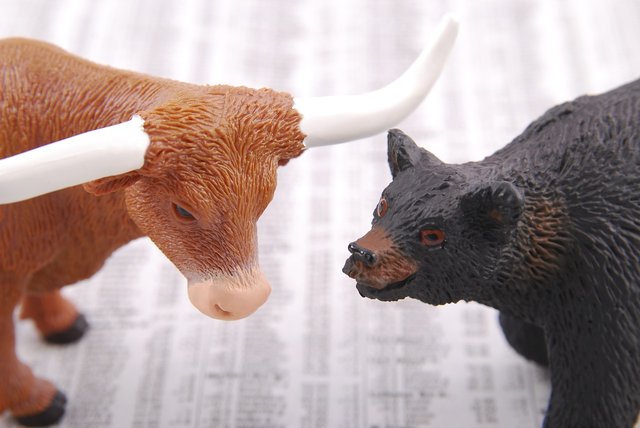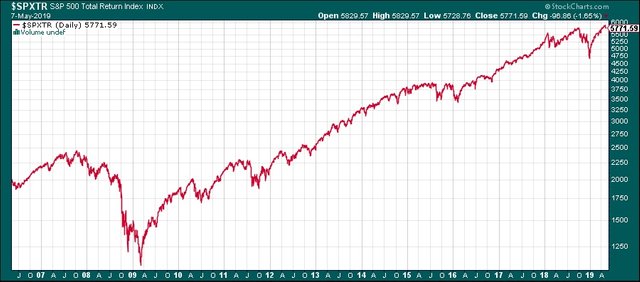Is That A Beginning Of A New Crash?

Wall Street tumbles on trade-war fears this week after Donald Trump threatens China with new import tariffs. Other stock exchanges are following the leader and falling too, globally. One of the main reasons stock markets recovered quickly from the December lows was, markets were expecting success in the American-Chinese trade negotiations.
Other, the dovish Fed (stopping the interest rate hikes), remains intact.
Fifty shapes
Is this the only reason? Certainly, not. Markets are not binary, there is seldom only one reason behind what is moving them. The behavior of markets is usually shaped by many forces acting in opposite directions.
When we read stock market analyzes, we find at least a couple of optimistic and some pessimistic scenarios every day. And that, for decades, if not for centuries. For the current situation, for example, I have found the following key arguments and counter-arguments, positive and negative, in the press in these days:
- Up The E/P, the earnings/price ratio (reciprocal value of the famous P/E indicator) by the members of the S&P 500 index is slightly above 5 now. The 10 years US treasury yield is by 2.47 percent p. a. A theory says, if the E/P (the theoretical, expected yield of stocks) is higher than the yield of bonds, the stock market is undervalued. And vice versa. (But, as a consequence of the crisis of 2008-2009, bond yields are extremely low, globally.)
- Down The famous CAPE ratio, the cyclically adjusted, longer-term version of the P/E (from the Nobel laureate professor Robert Shiller) is very high, by 30. The long term mean was 16.6. See here That indicates that stock prices are overvalued. (But this indicator doesn’t consider the actual extraordinary interest environment.)
- Up The earnings of the American companies still remain on high level, the actual earnings season brought positive surprises in approximately 75 percent of the cases.
- Down The level of IPO-s (issuance of new shares) is very high. That can be a bad sign because insiders, main shareholders can have more information about their companies, than small investors. And they sell at an accelerated pace.
- Down The tariff war between USA and China is worsening. European and Japanese are fearing it could extend also to their products in the near future. German carmakers are falling, for example. (Also for various reasons.)
- Up The Fed stays without planning an interest hike this year, can remain “dovish”. (That was the other main force which elevated stock markets considerably this year.) There is still a lot of cash in the USA and in the global economy searching for profitable investment opportunities.
- Down But the data of the organization AAII in the USA indicate that the “smart money’, the institutional investors are over-positioned, highly invested. They are holding only 15 percent of cash in their portfolios, compared with a long term mean of 23 percent.
- Up I read the last analysis about the “sell in May-effect”, it seems not to be working lately. If it was working in the past, it only brought moderate gains. Maybe there is no reason to sell and go away now.
Must have many opinions
So, that is what I found in the last days. How can be the opinions so contradictory? The secret is that it would be strange if there were no contradictions in these analyzes. This is quite normal and, in fact, necessary for the stock market.

(Click chart for high resolution. S&P 500 Total Return version, with dividends included. Chart courtesy of Stockcharts.com)
If everyone were in the same direction, if positive or negative opinions would be overwhelmed, then the stock market would react quickly to this. It would move where the majority of investors think it should move. People would modify the prices through their purchases or sales that match their beliefs.
New balance
The new price would force at least part of the analysts to reconsider their assessment. In this case, some of the opinions would change and the positive and negative opinions would rebalance at the new price level.
Of course, this rebalancing is not based on the rules of classical democracy, because the number of participants and voters is not decisive here. A single voter, who has more than a billion dollars, may have more power than a thousand other shareholders in the formula.
No such thing like too expensive
There is no indicator that always accurately indicates the undervaluation or overestimation of the stock market. These concepts, definitions are always subjective. Anyway, there are no shares that are too expensive. Each share is worth as much as the actual buyers are willing to pay for it.
In my opinion, the markets are very probably overvalued. But this situation can last other years before a longer downtrend begins. (By the way, downtrends are generally much shorter in time than uptrends.) Maybe, tomorrow, Donald Trump tweets something nice about the trade talks, and the bulls take over the control, again.
Let’s look for something which can be a good investment also by falling stock markets. Commodities, maybe? Or interesting short ideas?
Please, also vote my poll on dPoll about this
(Photo: Pixabay.com)
Maybe crypto-currencies?
I overweighted cryptos already.
To listen to the audio version of this article click on the play image.

Brought to you by @tts. If you find it useful please consider upvoting this reply.